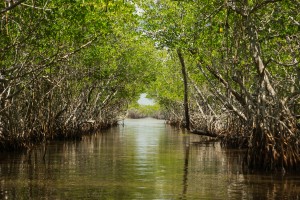 How much do you know about the Everglades? Even though this area is a National Park, the average person may not know a lot of details about this wetland, especially if they do not live near it. In the national news, people are hearing about the Everglades restoration, but may not know a whole lot about the Park itself and its importance to the ecosystem of the area. The Everglades is a truly mystical place, so we wanted to share with you some fun, interesting, and maybe even little-known facts, about it.
How much do you know about the Everglades? Even though this area is a National Park, the average person may not know a lot of details about this wetland, especially if they do not live near it. In the national news, people are hearing about the Everglades restoration, but may not know a whole lot about the Park itself and its importance to the ecosystem of the area. The Everglades is a truly mystical place, so we wanted to share with you some fun, interesting, and maybe even little-known facts, about it.
- The Everglades is a slow-moving river.
- Before mankind moved into southern Florida, the Everglades was a much bigger place. In fact, it was 50 percent bigger, but construction and drainage has caused the Everglades to shrink in size. It used to be around 8 million acres.
- It is the only place in the world where alligators and crocodiles coexist.
- Around 7-8 million Florida residents get their water from the Everglades.
- It is the largest continuous sawgrass prairie in North America.
- It is a World Heritage, a Biosphere Reserve, and a Wetland of International Significance.
- 13 endangered species and 10 threatened species live in the Everglades.
- It is home to the Western hemisphere’s largest mangrove ecosystem.
- Native Americans, who lived around the Everglades referred to it as Pahayokee, which translates to “grassy waters.”
- It is the largest subtropical wetland ecosystem in North America.
- The most dominant life form in the Everglades is the periphyton, an algae/microbe that floats on the surface of the water.
- The first people to inhabit the Everglades were the Calusa Indians around 1000 B.C.
- Although iconic now, airboats weren’t common in the Everglades until the 1950s.
- There are no underground springs in the Everglades, but the Floridian Aquifer (reservoir) lies 1,000 feet below.
- 36 protected species live in the Everglades.
It’s certainly interesting to read fun facts about the Everglades, but it’s even more amazing to experience this River of Grass in person. There’s no place like it in the world! An airboat tour through the Park is a great way to take in all the sights, smells, and sounds. To book an airboat trip with Captain Mitch’s Airboat Tours, click here or call 800-368-0065.
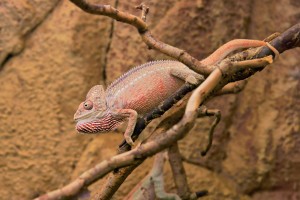 The Burmese python is notorious for being an invasive species slithering all over the Everglades, but there are many other invasive species living and breeding in the wetlands. In fact, there are around 139 species of reptiles and amphibians living in Florida, not to mention all the invasive mammals and plants! According to researchers at the University of Florida, there are more invasive species of reptiles and amphibians living in the wild in Florida than anywhere else in the world. Thanks to humans releasing their pets into the wild, there are now six different chameleon species in the wild in Florida. Chameleons are not native to Florida; they are an invasive reptile that hail from Africa, Madagascar, and parts of Asia and Europe.
The Burmese python is notorious for being an invasive species slithering all over the Everglades, but there are many other invasive species living and breeding in the wetlands. In fact, there are around 139 species of reptiles and amphibians living in Florida, not to mention all the invasive mammals and plants! According to researchers at the University of Florida, there are more invasive species of reptiles and amphibians living in the wild in Florida than anywhere else in the world. Thanks to humans releasing their pets into the wild, there are now six different chameleon species in the wild in Florida. Chameleons are not native to Florida; they are an invasive reptile that hail from Africa, Madagascar, and parts of Asia and Europe.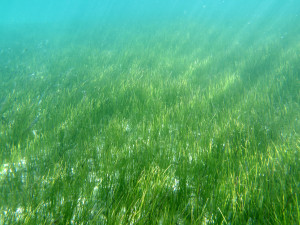 You might know that there’s a lot of seagrass around Florida and throughout the Everglades.; there’s 7 kinds of seagrass in Florida to be exact. But, did you know that this seagrass is dying? Much of the beautiful green, flowering seagrasses in the waters of the Everglades are turning brown and dying off. Last year, National Park Service researchers discovered a 40,000-acre section of seagrass in Florida Bay that is dying. Seagrass provides food and shelter for many different species for marine life, while also maintaining water quality. If this grass dies off, animals, fish, and even humans will be impacted negatively.
You might know that there’s a lot of seagrass around Florida and throughout the Everglades.; there’s 7 kinds of seagrass in Florida to be exact. But, did you know that this seagrass is dying? Much of the beautiful green, flowering seagrasses in the waters of the Everglades are turning brown and dying off. Last year, National Park Service researchers discovered a 40,000-acre section of seagrass in Florida Bay that is dying. Seagrass provides food and shelter for many different species for marine life, while also maintaining water quality. If this grass dies off, animals, fish, and even humans will be impacted negatively.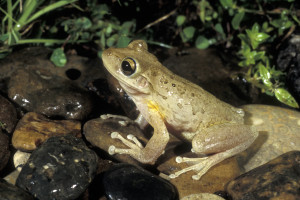 Do you know the lovely creatures that sing their song at night in the Everglades? Frogs and toads! These amphibians are no strangers to Florida, and can be spotted all over the Everglades. The wetland is home to many different species of frogs and toads, including:
Do you know the lovely creatures that sing their song at night in the Everglades? Frogs and toads! These amphibians are no strangers to Florida, and can be spotted all over the Everglades. The wetland is home to many different species of frogs and toads, including: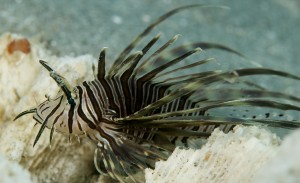 The Florida Everglades have long been a popular tourist destination for visitors from around the United States and around the world. It is easy to see why so many people make this a must see place on their “bucket lists” since it is a unique, one of a kind landscape that gives you access to an incredibly diverse and sensitive environment. The Everglades is a wilderness preserve like no other, allowing visitors a chance to experience flora and fauna that can’t be seen many (if any) other place on earth.
The Florida Everglades have long been a popular tourist destination for visitors from around the United States and around the world. It is easy to see why so many people make this a must see place on their “bucket lists” since it is a unique, one of a kind landscape that gives you access to an incredibly diverse and sensitive environment. The Everglades is a wilderness preserve like no other, allowing visitors a chance to experience flora and fauna that can’t be seen many (if any) other place on earth.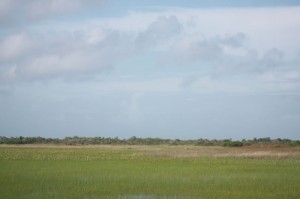 The rest of us may have four seasons (Spring, Summer, Fall, and Winter), but did you know the Everglades only has two seasons? The Everglades seasons don’t go by the temperature, but rather the water levels in the wetland. The two seasons are known as: the Wet Season and the Dry Season.
The rest of us may have four seasons (Spring, Summer, Fall, and Winter), but did you know the Everglades only has two seasons? The Everglades seasons don’t go by the temperature, but rather the water levels in the wetland. The two seasons are known as: the Wet Season and the Dry Season.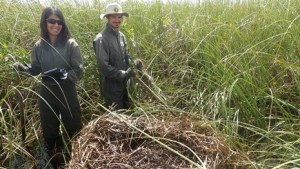 The Everglades National Park may be full of plants, animals, birds, insects, fish, and water, but it’s also home to many different research programs. The South Florida Natural Resources Center (SFNRC) conducts research that informs the management of the south Florida parks pertaining to wildlife, restoration, water quality, hydrology, and invasive plants and animals.
The Everglades National Park may be full of plants, animals, birds, insects, fish, and water, but it’s also home to many different research programs. The South Florida Natural Resources Center (SFNRC) conducts research that informs the management of the south Florida parks pertaining to wildlife, restoration, water quality, hydrology, and invasive plants and animals.





